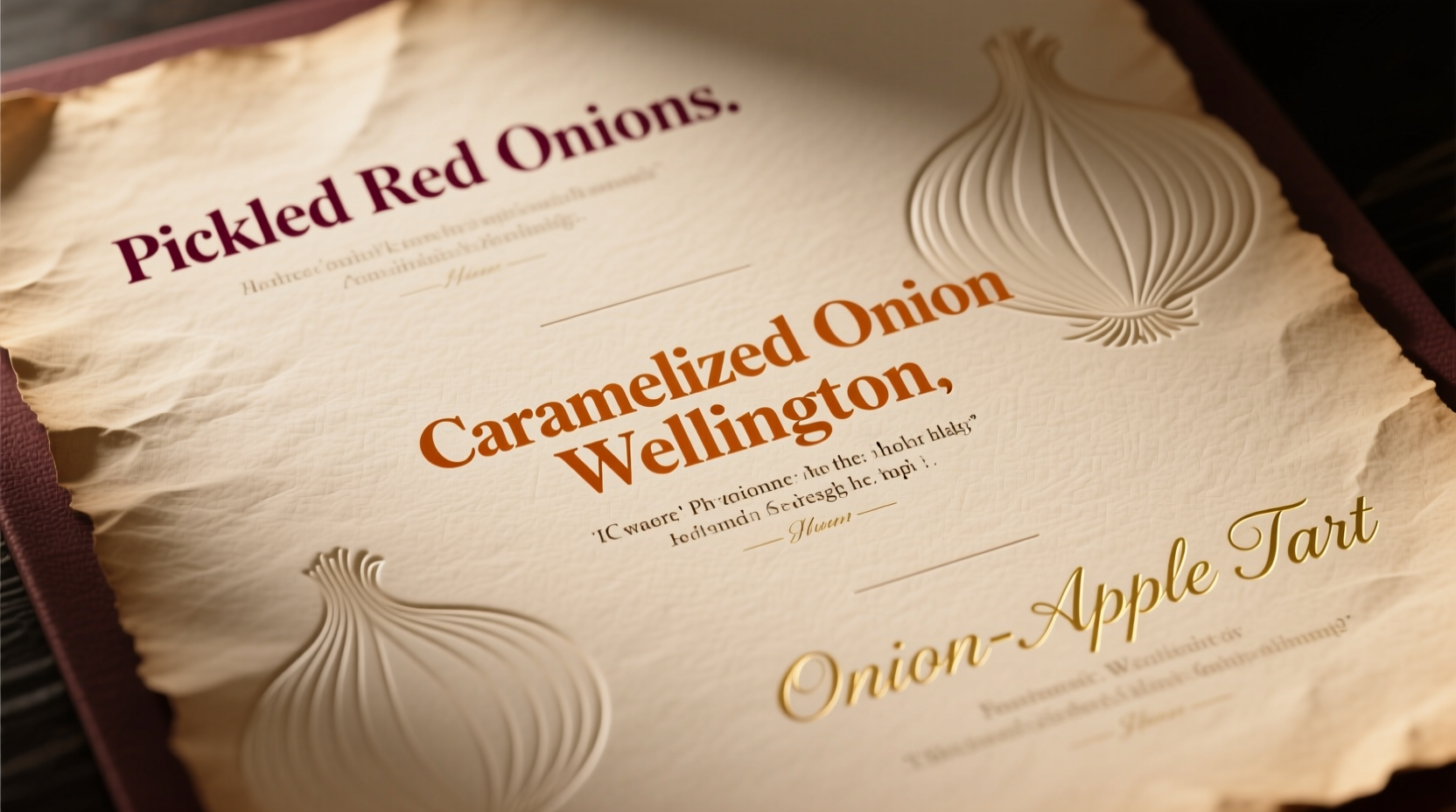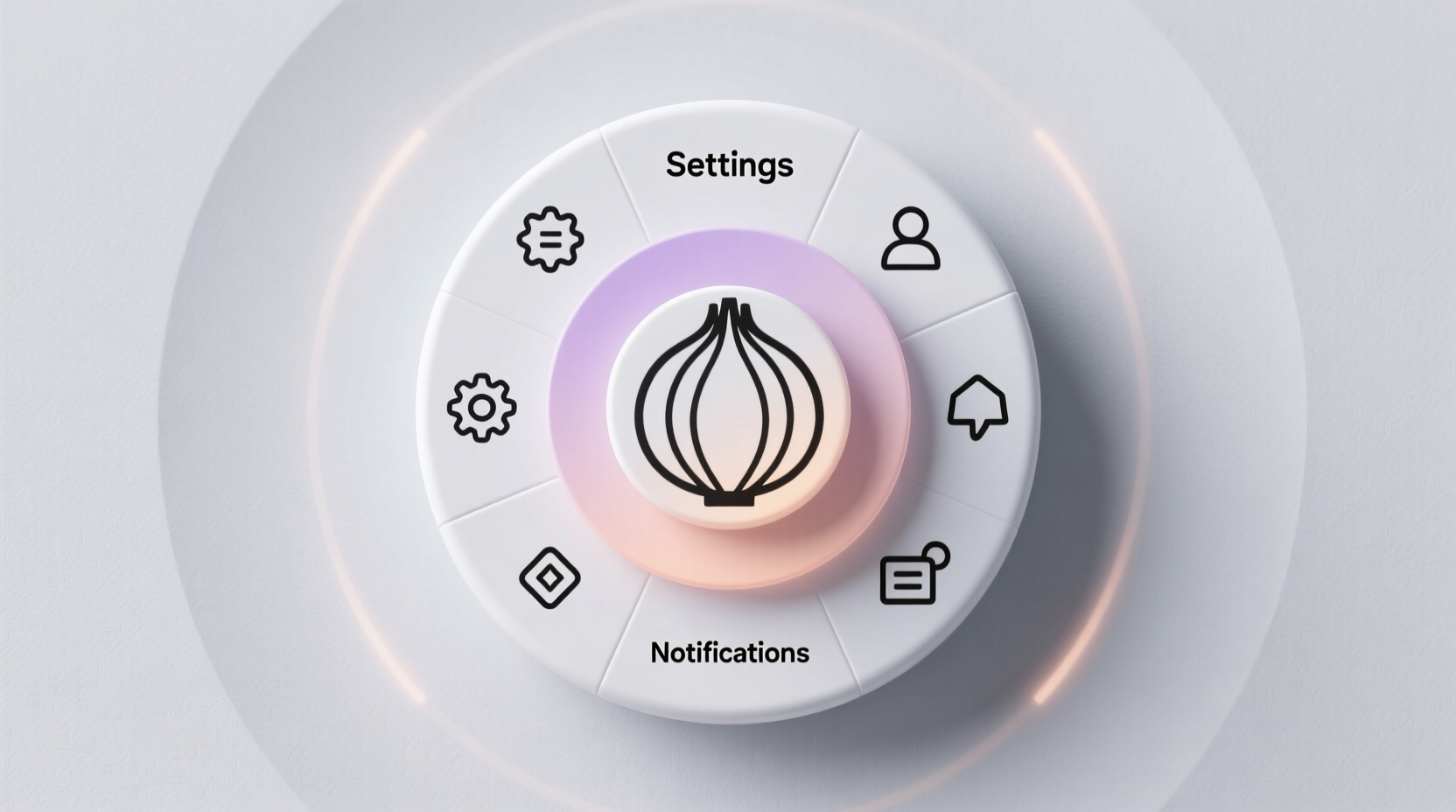Forget thinking of onions as merely a background flavor. A properly crafted onion menu celebrates this versatile vegetable's full potential across an entire meal. Whether you're planning an elegant dinner party or exploring new culinary horizons, understanding how to build a cohesive menu around different onion varieties unlocks flavors you never knew possible.
Why Onions Deserve Their Own Menu
Onions contain over 100 beneficial compounds including quercetin and organosulfur compounds that provide both flavor complexity and health benefits. According to USDA nutritional data, a single medium onion delivers 20% of your daily vitamin C needs and contains prebiotic fibers that support gut health. But beyond nutrition, onions offer an unmatched flavor journey—from sharp and pungent when raw to sweet and complex when caramelized.
Understanding Onion Varieties and Their Best Uses
Not all onions work for every dish. Selecting the right variety at peak season makes the difference between a good dish and an extraordinary one. This comparison shows which onions shine in different applications:
| Onion Type | Best Season | Flavor Profile | Ideal Menu Applications |
|---|---|---|---|
| Yellow Onions | Year-round (peak summer) | Strong when raw, sweet when cooked | Caramelized side dishes, French onion soup, roasted vegetable medleys |
| Red Onions | Summer through early fall | Sharp, slightly sweet, vibrant color | Salads, pickled appetizers, grilled as main course accompaniment |
| White Onions | Spring through summer | Crisp, clean heat | Salsas, ceviche, Mexican cuisine applications |
| Shallots | Late summer through winter | Delicate, subtle garlic notes | Vinaigrettes, sauces, delicate egg dishes |
| Green Onions | Spring through fall | Mild, fresh, grassy | Garnishes, stir-fries, light broths, appetizer toppings |
Source: USDA Agricultural Research Service
Building Your Complete Onion-Centric Menu
Creating a successful onion menu requires thoughtful progression through courses. Start light and build complexity, allowing diners to experience the full range of onion flavors without overwhelming their palate.
Appetizer: Setting the Stage
Begin with raw or lightly prepared onions to showcase their natural crispness. A pickled red onion salad with citrus dressing provides bright acidity that prepares the palate. For something more substantial, try caramelized onion and goat cheese tartlets—the sweet-savory combination creates an immediate flavor connection.
Main Course: The Flavor Centerpiece
Your main course should feature onions as the star, not just a supporting ingredient. Consider:
- Onion Wellington (a vegetarian alternative to beef Wellington)
- Grilled Vidalia onion steaks with herb crust
- French onion soup transformed into a deconstructed main course
Professional chefs typically use a 3:1 ratio of cooked to raw onion in main dishes to balance sweetness with complexity. When preparing onions for main courses, remember that cooking time dramatically affects flavor—15 minutes creates softness while 45+ minutes develops deep caramelization.
Dessert: The Unexpected Finish
Yes, onions can even shine in dessert! The natural sugars in caramelized onions pair beautifully with apples, pears, or even chocolate. A popular technique among innovative chefs is creating onion marmalade to accompany cheese courses or incorporating finely minced caramelized onions into chocolate cake batter for unexpected depth.
Seasonal Considerations for Your Onion Menu
Onions have distinct seasonal peaks that affect their sugar content and water ratio. Understanding this timeline ensures optimal flavor in your menu:
Spring: Green onions and scallions reach peak freshness with delicate flavor
Summer: Sweet onions like Vidalias and Walla Wallas dominate with high sugar content (12-15%)
Fall: Storage onions (yellow, red, white) develop complex flavors after curing
Winter: Shallots and specialty varieties provide concentrated flavor in colder months
Source: Oregon State University Extension Service
Critical Preparation Techniques for Maximum Flavor
How you cut and cook onions dramatically affects their final flavor profile. Master these techniques for professional results:
Cutting Direction Matters
Cutting across the onion's growth rings (horizontally) creates more surface area and releases more enzymes, resulting in stronger flavor—perfect for salsas. Cutting with the growth rings (vertically) creates milder flavor ideal for caramelizing. Always use a sharp knife to minimize cell damage and reduce tears.
The Caramelization Sweet Spot
True caramelization occurs between 320-356°F (160-179°C). Below this range, onions merely soften; above it, they burn. The process requires 40-50 minutes of patient cooking with occasional stirring. Adding a pinch of baking soda (1/16 teaspoon per pound of onions) raises the pH and accelerates the Maillard reaction, creating deeper color in half the time.
Common Onion Menu Mistakes to Avoid
Even experienced cooks make these errors when building an onion-focused menu:
- Overlooking moisture content: Summer onions contain up to 90% water versus 80% in storage onions—adjust cooking times accordingly
- Using only one variety: A complete menu needs multiple onion types for flavor contrast
- Improper storage: Never refrigerate whole onions—store in a cool, dark, well-ventilated space
- Rushing caramelization: True caramelization can't be rushed without burning
Sample Three-Course Onion Menu
Here's a complete seasonal menu showcasing onion versatility at its peak in late summer:

Expanding Your Onion Culinary Horizons
Once you've mastered the basics, experiment with these advanced techniques:
- Create onion ash by burning dried onion skins for dramatic presentation
- Make onion seed oil for finishing dishes with concentrated flavor
- Try fermenting onions for complex umami notes in sauces
- Use onion broth as the base for soups instead of traditional stock
Remember that building a successful onion menu isn't about using onions in every dish—it's about showcasing their transformative potential across a thoughtful progression of flavors. When executed properly, an onion menu reveals why this humble vegetable has been celebrated in cuisines worldwide for thousands of years.
Can I create a balanced onion menu for people who dislike raw onions?
Absolutely. Focus on cooked preparations where the sharpness transforms into sweetness. Caramelized onions, roasted onion wedges, and slow-cooked onion soups minimize the pungency while maximizing natural sugars. Start with dishes where onions have been cooked for 30+ minutes to ensure complete flavor transformation.
How do I prevent guests from having onion breath after my menu?
Pair onion dishes with parsley, mint, or apples which contain enzymes that neutralize sulfur compounds. Serve coffee beans for guests to chew after the meal—this traditional Italian remedy effectively eliminates lingering odors. Properly caramelized onions (cooked 45+ minutes) also produce significantly less breath impact than raw or lightly cooked onions.
What wine pairs best with an onion-centric menu?
Medium-bodied white wines work best with onion menus. An oaked Chardonnay complements caramelized dishes, while a dry Riesling cuts through richer preparations. For red wine options, choose lighter varieties like Pinot Noir that won't overpower the delicate onion flavors. Avoid highly tannic wines which can clash with onion's sulfur compounds.
How far in advance can I prepare components of an onion menu?
Caramelized onions freeze beautifully for up to 3 months. Pickled onions keep for 2 weeks in the refrigerator. Raw cut onions should be prepared no more than 2 hours before serving to prevent oxidation. For multi-course menus, prepare all cooked elements 1-2 days ahead and store properly—only assemble final presentations shortly before serving.











 浙公网安备
33010002000092号
浙公网安备
33010002000092号 浙B2-20120091-4
浙B2-20120091-4